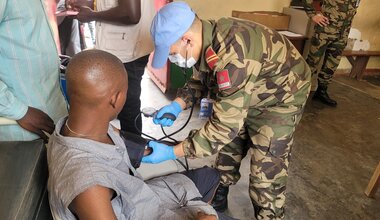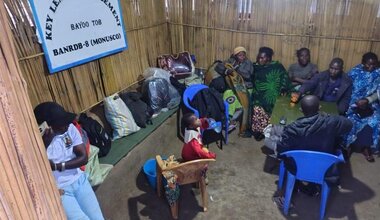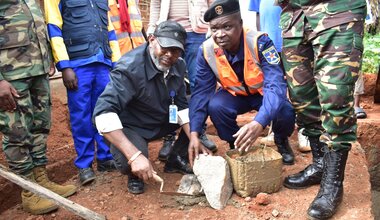A global strategy for the preservation of Congo’s natural sites
Kinshasa, 14 January 2011 - The Deputy Special Representative of the United Nations Secretary-General in the Democratic Republic of Congo, Ms. Leila Zerrougui, and Ms. Irina Bokova, UNESCO's Director-General, took part, on 14 January, in a high level meeting with national authorities on the preservation of Congo's natural sites that have been classified as World Heritage.
The Democratic Republic of Congo is the only country in Africa with five natural sites on its territory that fall under UNESCO's World Heritage. These sites include the national parks of Garamba, Kahuzi-Biega, Salonga, Virunga, and the Okapis reserve park. But, despite notable progress on the country's political scene, coupled with the resolve of both the government and the international community to preserve this heritage, the condition of these parks remains very fragile.
The most threatening factors to this ecosystem in the past decade has been the political unrest, the armed groups, poachers, refugees and internally displaced people.
For Ms. Zerrougui, no matter how daunting the task to preserve this world heritage, it will not deter the determination of the United Nations to continue its support to the government of the DRC. In the same vein, UNESCO's Director-General said that the protection and the preservation of this ecosystem remains a top priority of the organization that she is heading.
MONUSCO is contributing to the preservation of this heritage
Owing to its mandate, the United Nations Organization Stabilization Mission in the Democratic Republic of the Congo (MONUSCO) has continuously supported the Congolese national army in its action against various armed groups in eastern DRC, where four of the five natural sites are located, thus contributing in improving security in these areas.
In addition, MONUSCO is assisting the government in its Stabilization and Reconciliation program known by its French acronym of STAREC, which aims at restoring state authority in the east, and in the long run, will help reinforce government's capacities in the protection of this world heritage.
MONUSCO is also engaged, along with the government, in the fight against illegal exploitation of natural resources. Five minerals trade centers due to open soon in the Kivus will contribute to put some order in the mining sector while cutting off armed groups from a precious source of income. This pilot project is part of the framework of the protection and preservation of the natural heritage.
Thanks to MONUSCO's logistical support, environmental conservationists were, on 27 April, able to safely transfer four gorilla babies to the sanctuary of Tayna, Kasugho, in the Lubero territory.
"One can appreciate the fine line between preservation and exploitation of natural resources when a country has been ravaged by war. But, it is up to us to find solutions to such a problem," concluded MONUSCO's Deputy Special Representative.
For her part, UNESCO's Director-General said she hoped that Congo's natural parks would soon be removed from the list of sites that still qualify as endangered world heritage. For her, the DRC cannot aspire to sustainable development without taking into account these parks, nor can it achieve social stability and unity without protecting them. She said they are the symbols of the country's soul, and a source of inspiration for future generations.
Before leaving for Brazzaville, Ms. Bokova signed an agreement on behalf of UNESCO with the DRC government for the creation of a Research Centre for the Great Lakes region which will be located in Kinshasa.
Fathya WABERI / MONUSCO
Related Links:
- Déclaration de Kinshasa sur les sites du patrimoine mondial de la RDC. Kinshasa, 14 janvier 2011 (in French).
- Communique conjoint sur la visite de la DG de l'UNESCO en RDC. Kinshasa, 13-14 janvier 2011 (in French).
 UN
UN United Nations Peacekeeping
United Nations Peacekeeping






